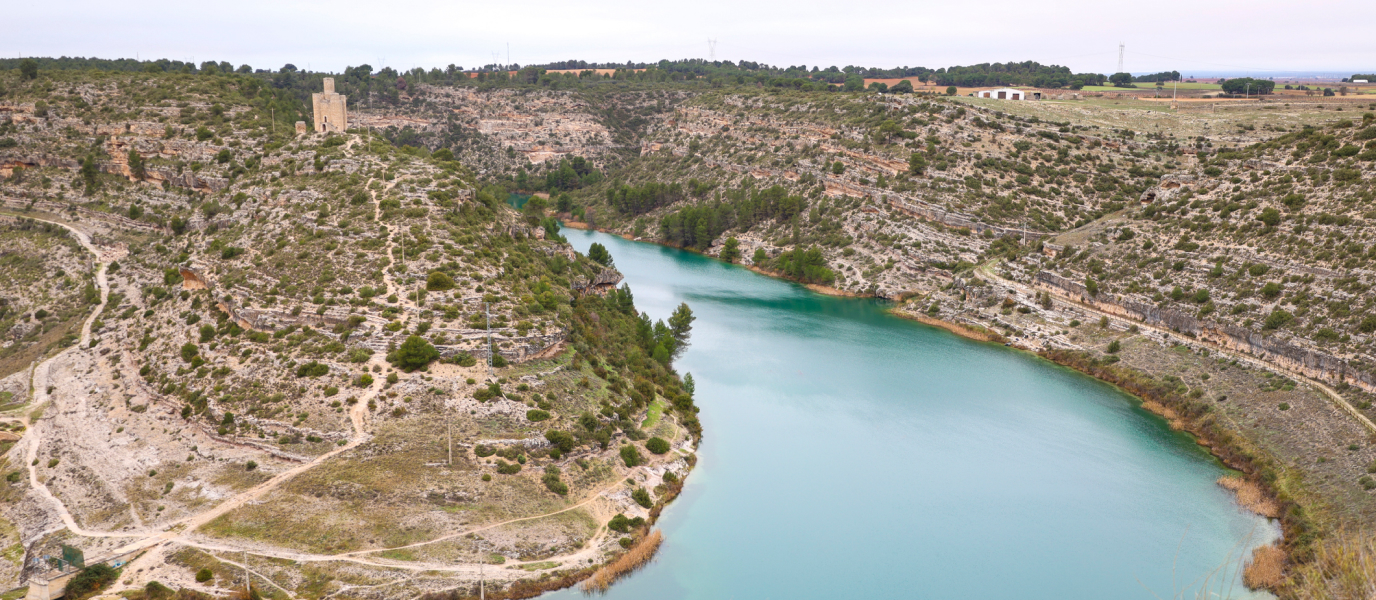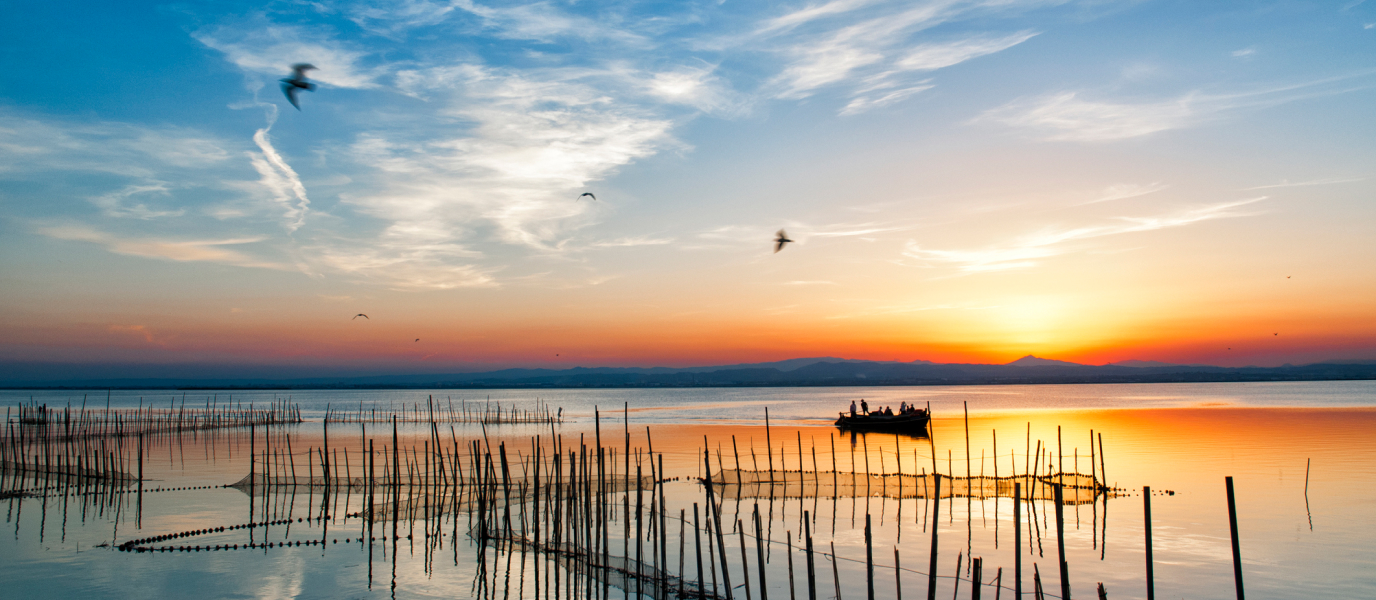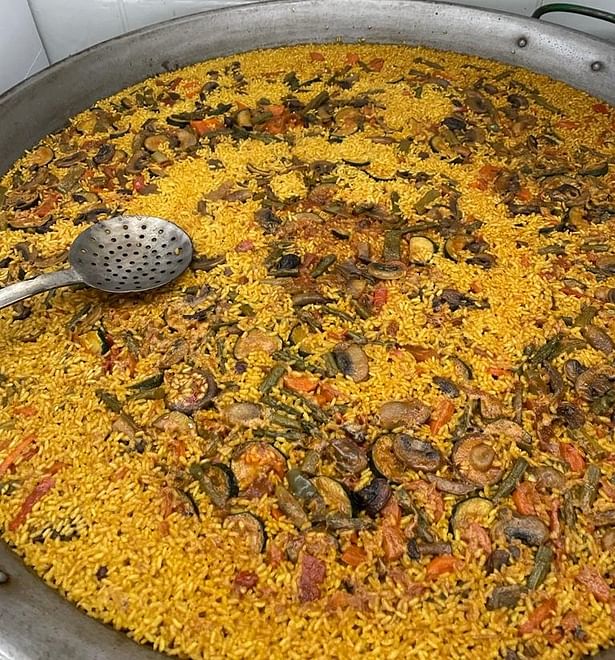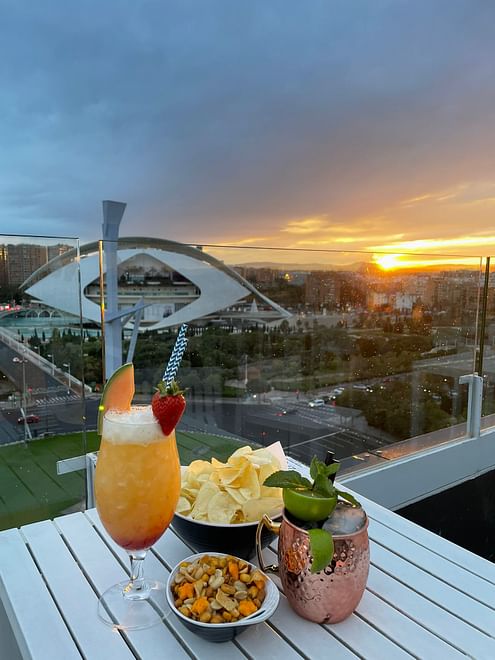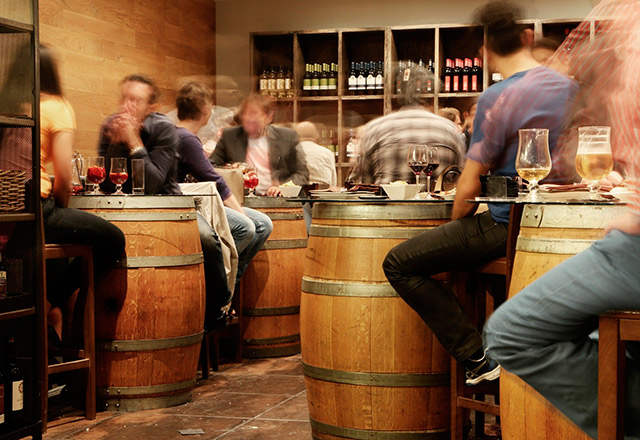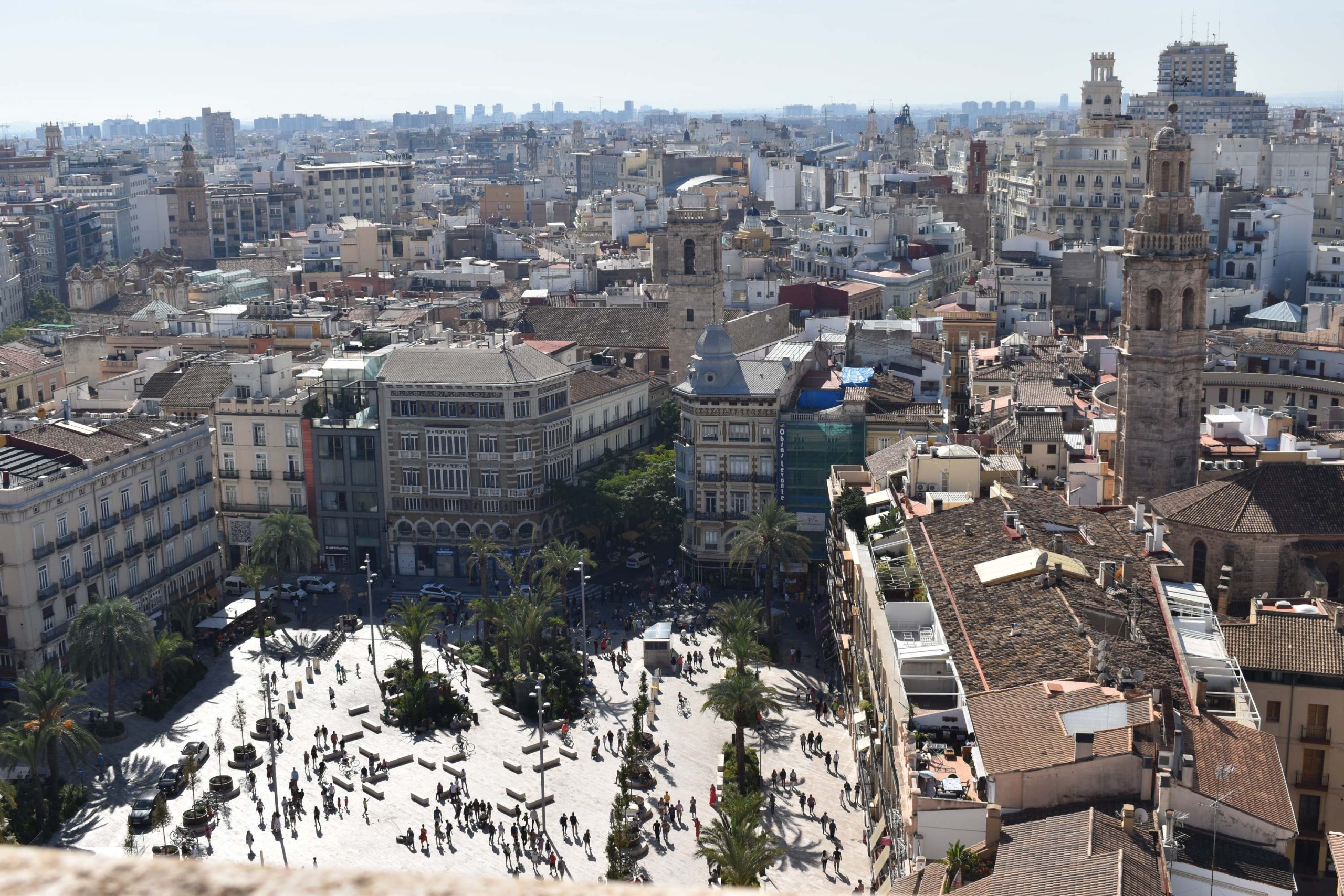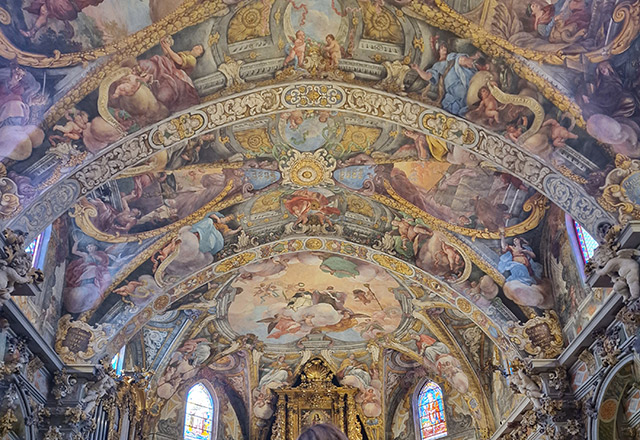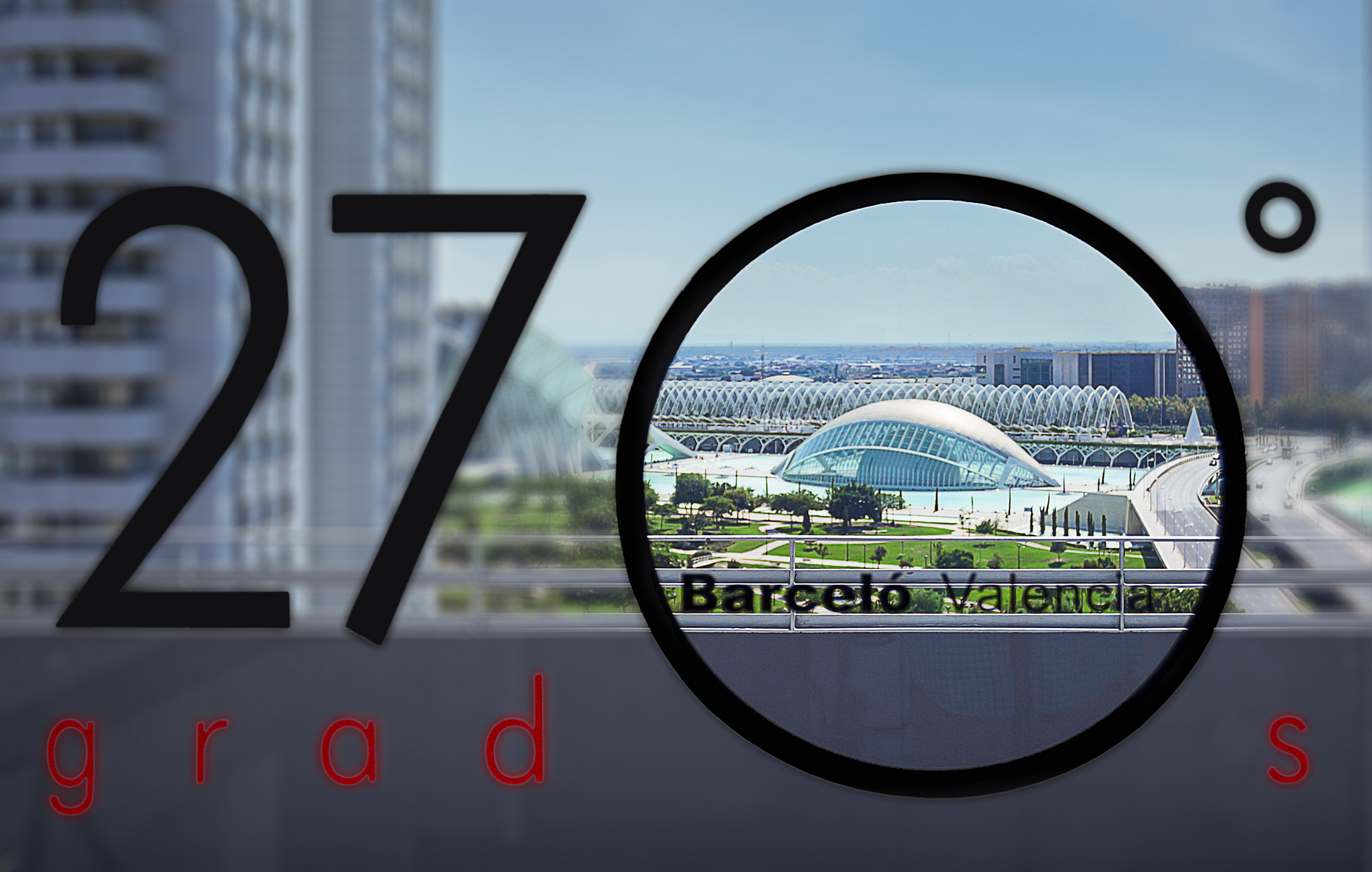The canyons of the River Júcar will surprise any traveller who ventures into the interior of the province of Valencia. You’d never imagine that, just over an hour from Platja de la Malva-rosa beach, you’d come across a landscape that will make you dizzy. Literally. Between the villages of Jalance and Cofrentes the River Júcar is channelled between majestic walls of rock, more than 300 metres high. It’s a magic, impressive spot, not at all what you’d expect to find in this area of Valencia. You’ll find ravines, Mediterranean forest, tunnels dug into the rock. Along with that, you’ll find plenty of thrills in this relatively small area, where nature always reigns supreme over man.
There’s a trail that’s perfect for discovering the canyon on foot, taking you through this heavenly area. The Júcar Canyon is important both as a tourist attraction and because of its great environmental value. The path is called the PR-V 219. This is a circular route that starts in Jalance, a small village with just 1,000 inhabitants, the surrounding area dotted with hills. The route is approximately 33 kilometres long and can be walked in roughly 10 hours. It’s important to mention that this path isn’t for everyone. It’s best to be fairly fit. However, for those who aren’t up to it, there’s also the possibility of walking a shorter stretch which is 16 kilometres long.
Júcar Canyon viewpoint
What will you find on this path that leads you through the Júcar Canyon? The first thing you’ll come across is the Don Juan Cave. Extremely valuable artefacts have been found here. These items were used by humans for hunting back in the Mesolithic Period (8,000 to 6,000 BC). Used as a home in ancient times and later as a refuge for shepherds and hunters, this space has been adapted to allow tourists to visit it. Right next to it you’ll find a visitors’ centre with a café, shop and waiting room. Visitors can venture 500 m into the cave, and guided tours take 40 minutes. You can even drive there, as there’s a car park nearby.
If you continue with your adventure through the canyon, after exploring the depths of the Don Juan Cave, you’ll soon come across the first of the many viewpoints that break up the path: the Campichuelo viewpoint, from which you can see the soaring vertical walls of the canyon that flank the River Júcar, or Xuquer in Valencian. This is a window to a true picture-postcard scene that never fails to impress. You can also enjoy it from another angle if you carry on to the Júcar Canyon viewpoint. From that point, especially if it’s a hot day, you can take a path down to a pool of water, perfect for a dip, weather permitting. If you need to get your strength back and eat, then head for the Fuente del Castillo viewpoint, equipped with tables, benches and a fountain, which invite to rest.
Picnic areas on the trail
The Fuente del Castillo viewpoint is only one of the picnic areas dotted along the Júcar Canyon trail, which has another three. The first is Moragete and the Don Juan Cave, the second is at Fuente Bella, and the last, at Fuente del Tobarro, you’ll come to after you enter the municipality of Jarafuel, in the region of Valle de Ayora.
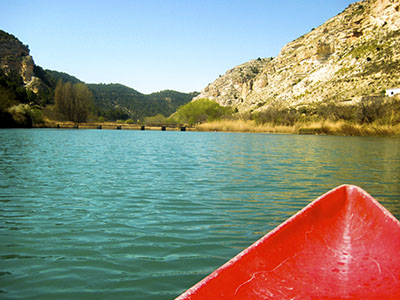
On the way back, you’ll pass over the Senda Centenillos, the Puente Star and Puente Nuevo bridges, and the Barranco del Agua. There are lots of interesting spots for tourists, such as the Aula de la Naturaleza del Moragete [Moragete Nature Classroom] and springs that feed into the river. Jalance is, of course, worth a visit. It’s a charming village where you can still detect the traces of the Moorish occupants who gave it its place in history. Don’t miss the medieval castle, perched on a hilltop, where, in 1609 the last Moors held out and refused to abandon their land.
A maze of narrow streets
To get an idea of what this place is like, you should know that the locals describe Jalance as a village embraced by mountains. The heart of the village is a maze of narrow streets that will remind you of old Moroccan souks. On the outskirts of the village, the valley opens up and you can spot two columns of steam behind the mountains. That’s a sign that you’re very close to the Sierra del Boquerón and Cofrentes, a settlement built on basaltic rock that, like Jalance, also has a Moorish castle.
A boat ride on the Júcar
For lovers of riverboat rides, Cofrentes offers the Valencia Autonomous Region’s first river route. It’s an hour-long journey up the River Júcar that starts here and ends at Cortes de Pallás. The boat is owned by the town hall and it has capacity for 60 passengers. It covers the 14 kilometres of water that separate one shore of the Cortes dam from the other. Just make sure you book in advance, as this is a popular activity. This dam was inaugurated in 1983 and is in an area of great natural beauty, between the mountains that encircle the famous Muela de Cortes, 400 metres above the waters of the River Júcar. Not far away is the Reserva Nacional de Caza Mayor [National Hunting Reserve], which is why it’s easy to spot mountain goats and mouflon sheep.
Canoeing and rafting
The waters of the River Júcar and the neighbouring River Cabriel also give you a chance to try canoeing, rafting, stand up paddle boarding and to take pedaloes out. These are extremely attractive activities during the summer months, giving you a chance to take a dip in beautiful natural surroundings.
To sum up, the Júcar Canyon is the perfect place to enjoy a special day immersed in nature. Discover small corners with unique charm in the heart of this majestic landscape.




































































